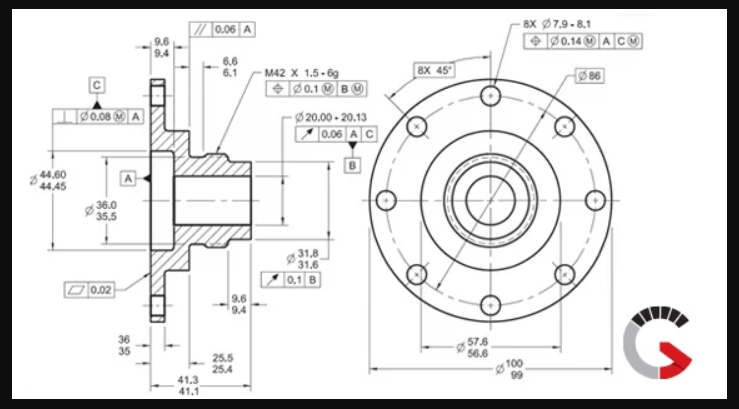This content was originally written and published by the Jesse Garant team on their website. Reproduced here from this link.
First Article Inspection overview
Before the manufacturing process begins, industry requirements suggest a detailed verification and comparison of product design vs. production result, known as First Article Inspection (FAI). Frequently used in the aerospace, medical device, and automotive industries, FAI reports are becoming a standard process to ensure the quality and consistency of the final product. Although conducting FAI can be complex, technological advancements and user-friendly software have allowed users to implement and execute this process quickly and accurately.
What is First Article Inspection?
As an official authentication method for a manufacturing process, FAI reports intent is to review and authorize dimensional reports. FAI reports utilize dimensional properties of a production part in comparison to design specifications, to ensure consistency or discover deviations. This process ensures reliability and repeatability of the manufacturing process, as well as ensuring the manufacturer’s ability to produce parts according to specifications.

FAI reports are developed on all new products that are representative of the first production run.
What is the purpose of FAI?
The purpose of a FAI report include the following:
- The FAI report provides a guideline to provide objective confirmation that all engineering design and specification requirements are correctly understood, accounted for, verified, and documented.
- Ensure the production process is reliable, repeatable, and consistent
- Develops a clear understanding and communication outlet between buyer and supplier.
- Verify the accuracy of drawings, ensuring that all changes made to part designs are accounted for
- Validate all tooling used to produce a part, ensuring the tools ability to produce parts at certain specifications
- Ensure manufacturing process is capable and can meet the needs of production
lity – used to summarize specific design characteristics.
When is the FAI report necessary?
FAI reports are necessary when one of the following occur:
- A change in design which can potentially affect fit, form, or function
- A change in manufacturing source, process, inspection method, location of manufacturer, tooling, or materials
- A change to a different media program that can potentially affect fit, form, or function
- Production of this part has not been executed for two years or more (or as specified by the customer)
FAI Benefits
Before going into the production of parts, FAI reports can be useful in determining whether a manufacturing process is capable of producing parts consistently within design parameters. Furthermore, FAI reports provide structure between customer and supplier for understanding and verifying project requirements. FAI also assists customers and suppliers to avoid or resolve miscommunication. This process also ensures the use of the right materials and tools, overall providing an effective initiative for expected results for production.
Full FAI vs. Partial FAI
A full FAI requires that all fields must be accounted for and filled out. With a partial FAI report, only the affected fields on the FAI form shall be filled out. In regards to any outstanding fields, they may be filled out at a later date or using previous data, given that it applies to the exact characteristics of duplicate parts produced by the same manufacturing process.
FAI Planning
Before the first production run parts, many factors must be accounted for in order to execute FAI planning, which typically includes the following:
Records for the manufacturing process – organize activities to be executed throughout the FAI process and responsible suppliers/organizations for each
Ensure approved material sources, laboratory and applicable manufacturing, planning, routing, and purchasing are according to specifications

Ensure every design characteristic specification is identified and met, with documentation detailing results. Gauge, tooling are qualified/calibrated and traceable
FAI Documentation
The supplier has the responsibility to fill out the documentation for FAI reports subject to the following forms:
Form 1: Part number accountability – this form is used to review part numbers and associated FAI accordingly
Form 2: Product accountability – used for raw materials, specifications, processes, and functional tests
Form 3: Characteristic accountability – used to summarize specific design characteristics.
To know more, please check Jesse Garant.










I didn’t know that first article inspection reports are meant to review and authorize dimensional reports. My brother was telling me about it a little bit yesterday when he came over for dinner. I’ll catch up with him on it and see if I can help with his projects and plans that need it.